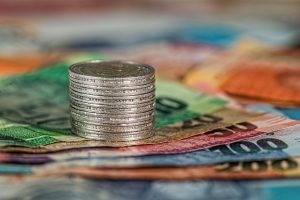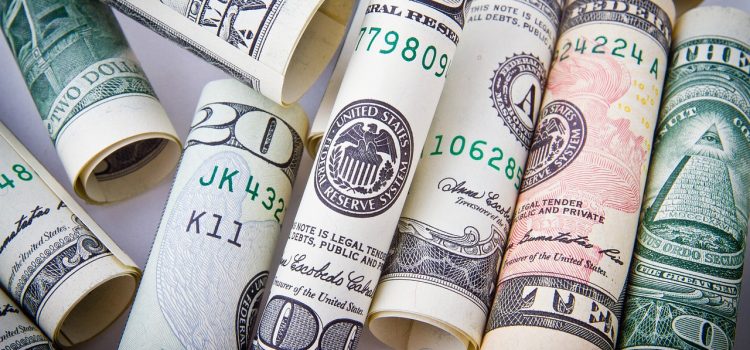
How to Track Your Spending
Managing personal finances effectively is a vital skill that can lead to financial stability and peace of mind. Tracking your spending is the cornerstone of this process. By understanding where your money goes, you can make informed decisions, cut unnecessary expenses, and achieve your financial goals. This article will delve into the various methods of tracking spending, the tools available, and the benefits of adopting this practice.

The Importance of Tracking Spending
Awareness of Financial Habits
One of the primary benefits of tracking your spending is gaining awareness of your financial habits. Many people are surprised to discover how much they spend on non-essential items such as dining out, entertainment, and impulse purchases. By tracking every expense, you can see patterns and identify areas where you may be overspending.
Budgeting and Financial Planning
Tracking your spending is essential for creating and maintaining a budget. A budget is a financial plan that allocates your income towards expenses, savings, and investments. When you know exactly where your money is going, you can create a realistic budget that aligns with your financial goals. This helps in avoiding overspending and ensures that you live within your means.
Debt Reduction
For those with debt, tracking spending can be a powerful tool in reducing and eventually eliminating debt. By identifying unnecessary expenses, you can redirect funds towards paying off debt. This not only helps in reducing the principal amount faster but also saves money on interest payments in the long run.
Methods of Tracking Spending
Manual Tracking
Manual tracking involves recording every expense by hand, either in a notebook or a spreadsheet. This method requires discipline and consistency but offers complete control over your financial data.
Advantages:
- Full control over data
- No need for digital tools or apps
- Customizable categories
Disadvantages:
- Time-consuming
- Prone to human error
- Requires discipline to maintain consistency
Digital Tools and Apps
Numerous digital tools and apps are available to simplify the process of tracking spending. These tools automatically categorize expenses, provide insights, and offer reminders for bill payments.
Popular Apps:
- Mint: A comprehensive app that connects to your bank accounts, categorizes transactions, and provides a complete financial overview.
- YNAB (You Need A Budget): Focuses on proactive budgeting and helps users allocate funds to specific categories.
- PocketGuard: Shows how much disposable income you have after accounting for bills, goals, and necessities.
Advantages:
- Automated tracking
- Real-time updates
- Visual representations of spending patterns
Disadvantages:
- Security concerns with linking bank accounts
- Subscription fees for premium features
- Less control over categorization
Bank and Credit Card Statements
Using bank and credit card statements is another effective way to track spending. By reviewing monthly statements, you can categorize expenses and identify trends.
Advantages:
- Detailed records of transactions
- Easy to access through online banking
Disadvantages:
- Time lag in tracking
- Requires manual categorization
Analyzing Your Spending
Categorizing Expenses
The first step in analyzing your spending is categorizing expenses. Common categories include housing, utilities, groceries, dining out, transportation, entertainment, and savings. Categorizing helps in identifying areas where you can cut costs.
Identifying Patterns
Look for patterns in your spending. Do you spend more on weekends? Are there certain months when your expenses spike? Identifying patterns helps in understanding your financial behavior and planning accordingly.
Comparing Against Budget
Compare your actual spending against your budget. Are you staying within your limits? If not, identify the categories where you are overspending and make adjustments.
Tools for Tracking and Analysis
Spreadsheets
Spreadsheets are a versatile tool for tracking and analyzing spending. You can create a customized spreadsheet with categories, set budgets, and track expenses. Excel and Google Sheets are popular choices.
Advantages:
- Customizable
- Free or low cost
- Detailed analysis
Disadvantages:
- Requires manual input
- Time-consuming
Financial Software
Software like Quicken and Microsoft Money offers advanced features for tracking and analyzing spending. These programs provide detailed reports, budget comparisons, and financial planning tools.
Advantages:
- Comprehensive analysis
- Automated data import
- Detailed reports
Disadvantages:
- Costly
- Learning curve
Comparative Analysis of Tracking Methods
| Method | Advantages | Disadvantages |
| Manual Tracking | Full control, customizable categories | Time-consuming, prone to human error, requires discipline |
| Digital Apps | Automated tracking, real-time updates, visual representations | Security concerns, subscription fees, less control over categorization |
| Bank Statements | Detailed records, easy access | Time lag, requires manual categorization |
| Spreadsheets | Customizable, free or low cost, detailed analysis | Requires manual input, time-consuming |
| Financial Software | Comprehensive analysis, automated data import, detailed reports | Costly, learning curve |
Benefits of Regular Spending Reviews
Improved Financial Health
Regular reviews of your spending can lead to improved financial health. By consistently monitoring and adjusting your spending habits, you can avoid debt, build savings, and achieve financial goals.
Image by Pexels.com
Enhanced Financial Security
Tracking spending enhances financial security by helping you avoid overspending and ensuring that you have enough funds for emergencies. It also helps in planning for future financial needs such as retirement.
Goal Achievement
Whether it’s buying a house, saving for a vacation, or building an emergency fund, tracking your spending is crucial for achieving financial goals. By keeping a close eye on your expenses, you can allocate more funds towards your goals.
Analysis Table
| Aspect | Manual Tracking | Digital Tools & Apps | Bank Statements | Spreadsheets | Financial Software |
| Ease of Use | Moderate | High | High | Moderate | Moderate |
| Cost | Low | Varies (Free to Subscription) | Low | Low | High |
| Customizability | High | Moderate | Low | High | High |
| Automation | None | High | Moderate | None | High |
| Security | High | Moderate | High | High | High |
| Depth of Analysis | High | Moderate | Moderate | High | Very High |
Comparative Table
| Feature | Manual Tracking | Digital Tools & Apps | Bank Statements | Spreadsheets | Financial Software |
| Automation | No | Yes | No | No | Yes |
| Real-Time Updates | No | Yes | No | No | Yes |
| Security Concerns | Low | Moderate | Low | Low | Low |
| Cost | Low | Varies | Low | Low | High |
| Customization | High | Moderate | Low | High | High |
| Detailed Analysis | High | Moderate | Moderate | High | Very High |
By carefully selecting the method that suits your needs and consistently tracking your expenses, you can gain significant control over your finances and work towards a more secure financial future.
Conclusion
Tracking your spending is an essential practice for managing personal finances. By understanding your financial habits, creating a realistic budget, and using the right tools, you can gain control over your finances and achieve your financial goals. Whether you choose manual tracking, digital tools, or financial software, the key is consistency and regular review. Start tracking your spending today and take the first step towards financial stability and security.










